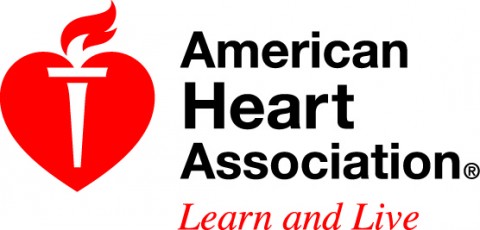American Heart Association Scientific Statement
 Dallas, TX – Children and teens who are abused, witness violence, are bullied or face other adversities are more likely to develop cardiovascular diseases in adulthood, according to a new scientific statement by the American Heart Association published in the Association’s journal Circulation.
Dallas, TX – Children and teens who are abused, witness violence, are bullied or face other adversities are more likely to develop cardiovascular diseases in adulthood, according to a new scientific statement by the American Heart Association published in the Association’s journal Circulation.
The statement is based on a review of existing scientific research published in peer-reviewed medical journals that documents a strong association between adverse experiences in childhood and teen years and a greater likelihood of developing risk factors such as obesity, high blood pressure and type 2 diabetes earlier than those not experiencing adverse experiences.

These risk factors raise the likelihood of developing heart and blood vessel diseases and conditions in adulthood, including coronary artery disease, heart attacks, strokes, high blood pressure, obesity and type 2 diabetes.
“The real tragedy is that children are exposed to these traumatic experiences in the first place,” said Shakira Suglia, Sc.D., the writing group chair for the statement and an associate professor of epidemiology at Emory University in Atlanta, Georgia. “We are talking about children and teens experiencing physical and sexual abuse and witnessing violence. Sadly, the negative consequences of experiencing these events does not end when the experience ends, it lasts many years after exposure.”
“Ideally, we want to prevent these things from happening in the first place as well as preventing the health consequences that arise from having these experiences,” Suglia said.
Adversity is commonly defined as anything children perceive as a threat to their physical safety or that jeopardizes their family or social structure, including emotional, physical or sexual abuse, neglect, bullying by peers, violence at home, parental divorce, separation or death, parental substance abuse, living in a neighborhood with high crime rates, homelessness, discrimination, poverty and the loss of a relative or another loved one.
Nearly 60 percent of Americans report an adverse event during childhood.
How adversity fuels cardiovascular and metabolic abnormalities remains unclear, but the current evidence suggests that behavioral, mental health and biological reactions to increased stress all appear to play a role.
For example, unhealthy reactions to stress, such as smoking or overeating, may be behind the increased risk for cardiovascular disease and diabetes among this group. Recurrent and chronic childhood stress is known to increase the risk of depression, anxiety and mood disorders among children and teens, which in turn lead to unhealthy behaviors that often lead to cardiovascular and metabolic illnesses.
Chronically high stress levels or repeated spikes could disrupt normal immune, metabolic, nervous and endocrine development and function.
Not all children who grow up facing adversity develop diseases of the heart and blood vessels, a finding that suggests the existence of a range of biological, environmental, cultural and social factors that may help reduce risk and prevent disease development. Further research to better understand these factors may one day lead to the development of preventive strategies, the researchers note.
The authors caution the evidence is observational and does not necessarily prove cause and effect. However, they add, the rapidly growing body of research is an important indicator that childhood adversity is a potent and critical modulator of disease and health.
Co-authors on scientific statement included Karestan Koenen, Ph.D.; Renée Boynton-Jarrett, M.D., Sc.D.; Paul Chan, M.D., M.Sc.; Cari Clark, Sc.D.; Andrea Danese, M.D., Ph.D.; Myles Faith, Ph.D.; Benjamin Goldstein, M.D., Ph.D.; Laura Hayman, Ph.D., R.N.; Carmen Isasi, M.D., Ph.D.; Charlotte Pratt, M.D., M.Sc.; Natalie Slopen, Sc.D.; Jennifer Sumner, Ph.D.; Aslan Teyfik, M.D., M.H.S.; Turner, M.D.; Christy Turer, M.D.; and Justin Zachariah, M.D.
Additional Resources:
- View the manuscript online.
- A commentary by Eduardo Sanchez, M.D., M.P.H., chief medical officer for prevention and chief of the Center For Health Metrics and Evaluation will be available on Dec.18, 2017.
- Healthy Kids
- Follow AHA/ASA news on Twitter @HeartNews



